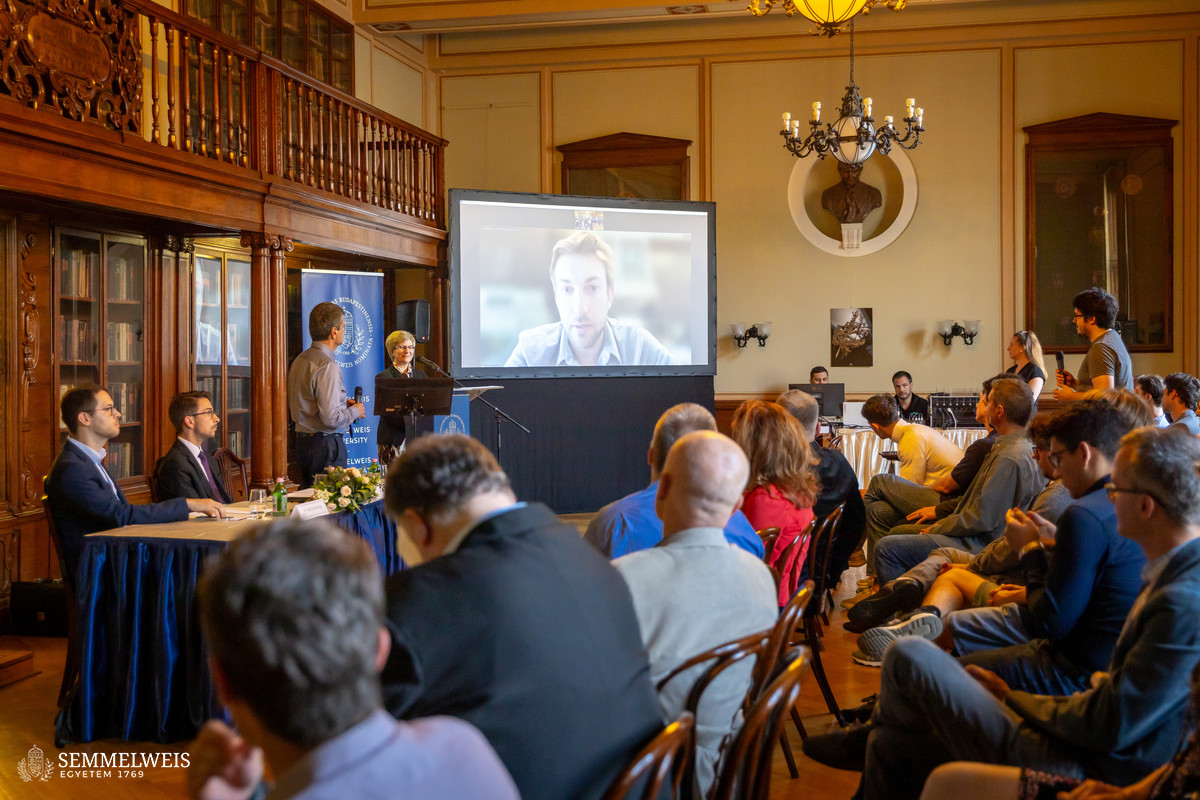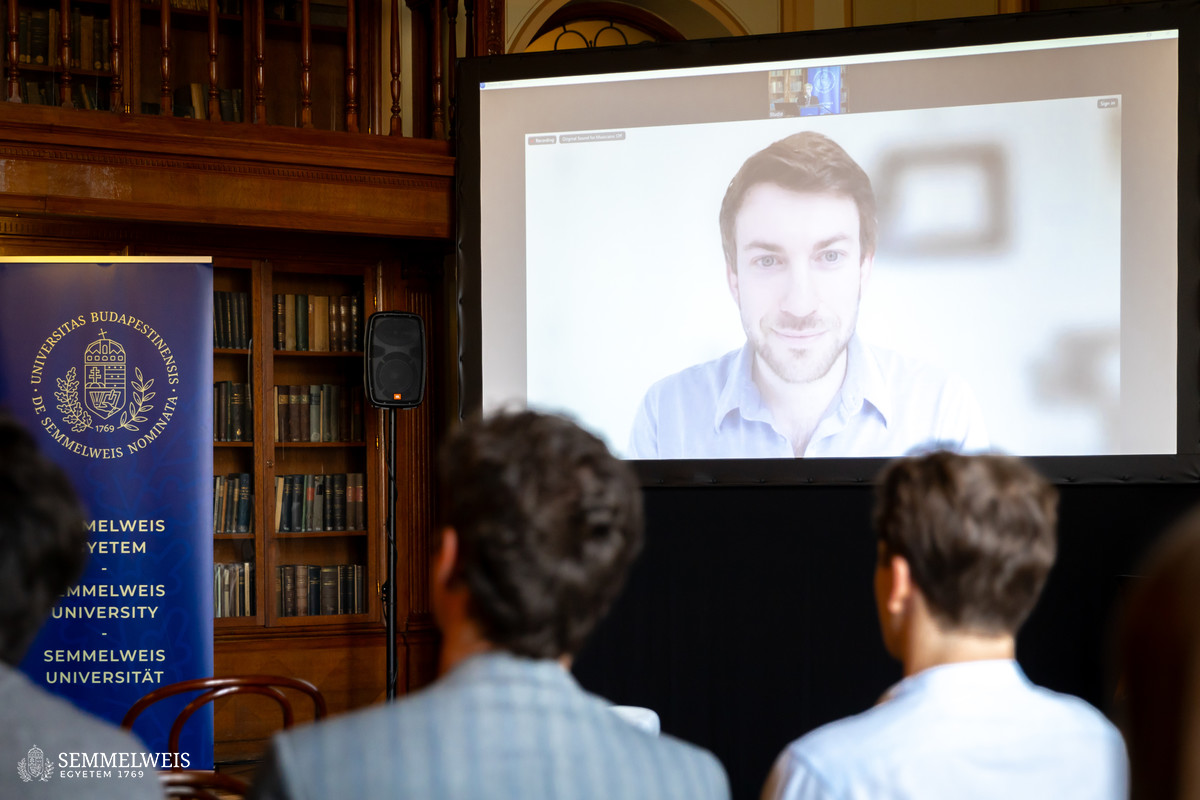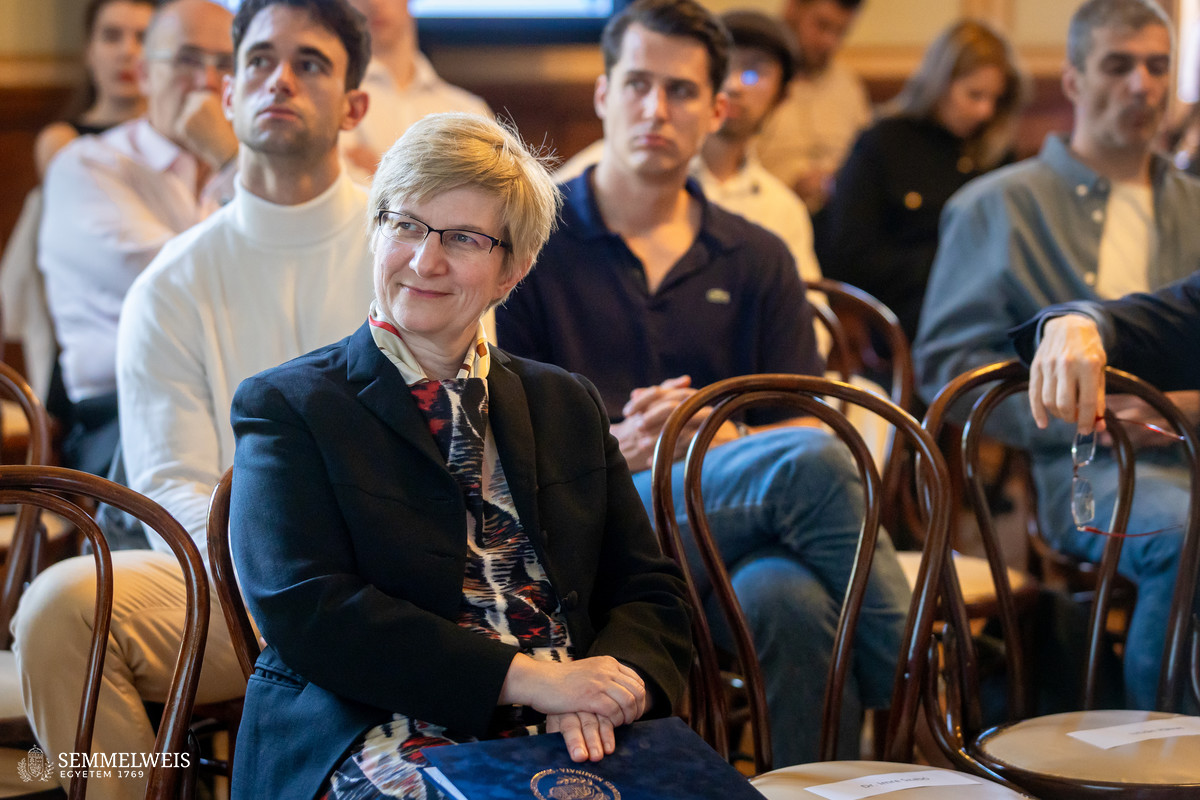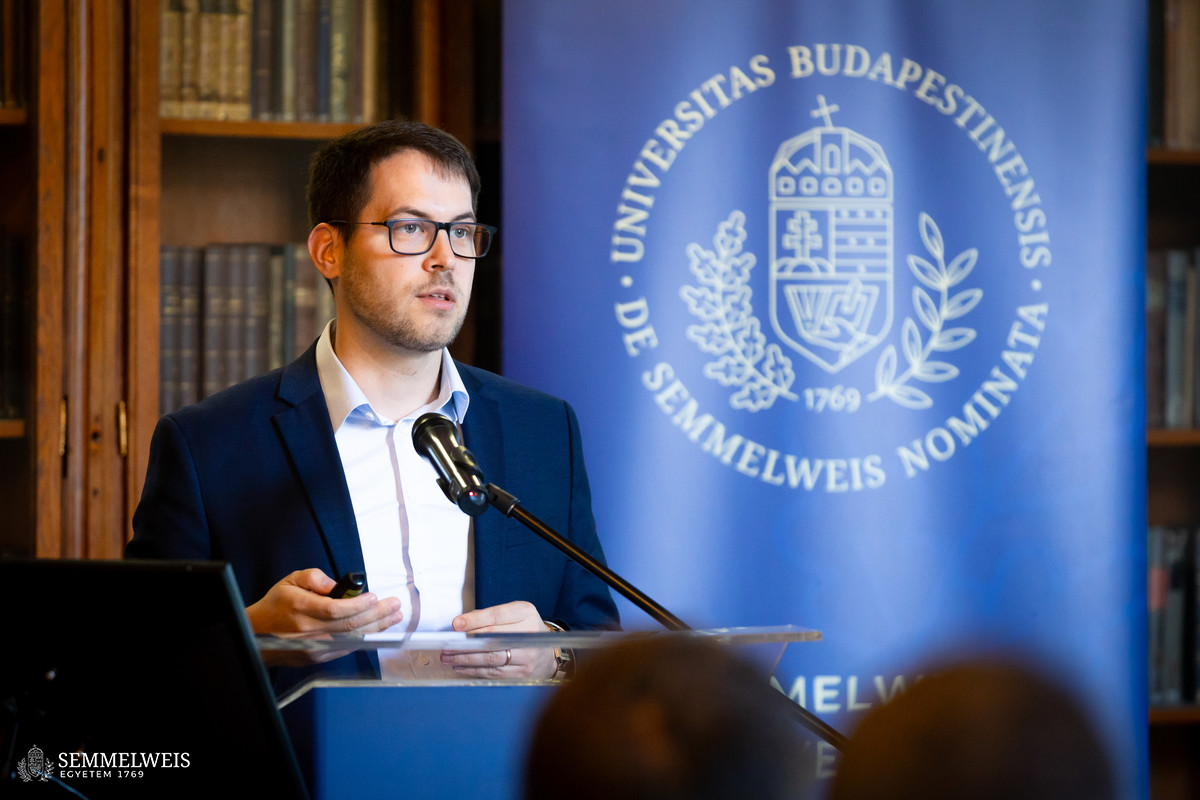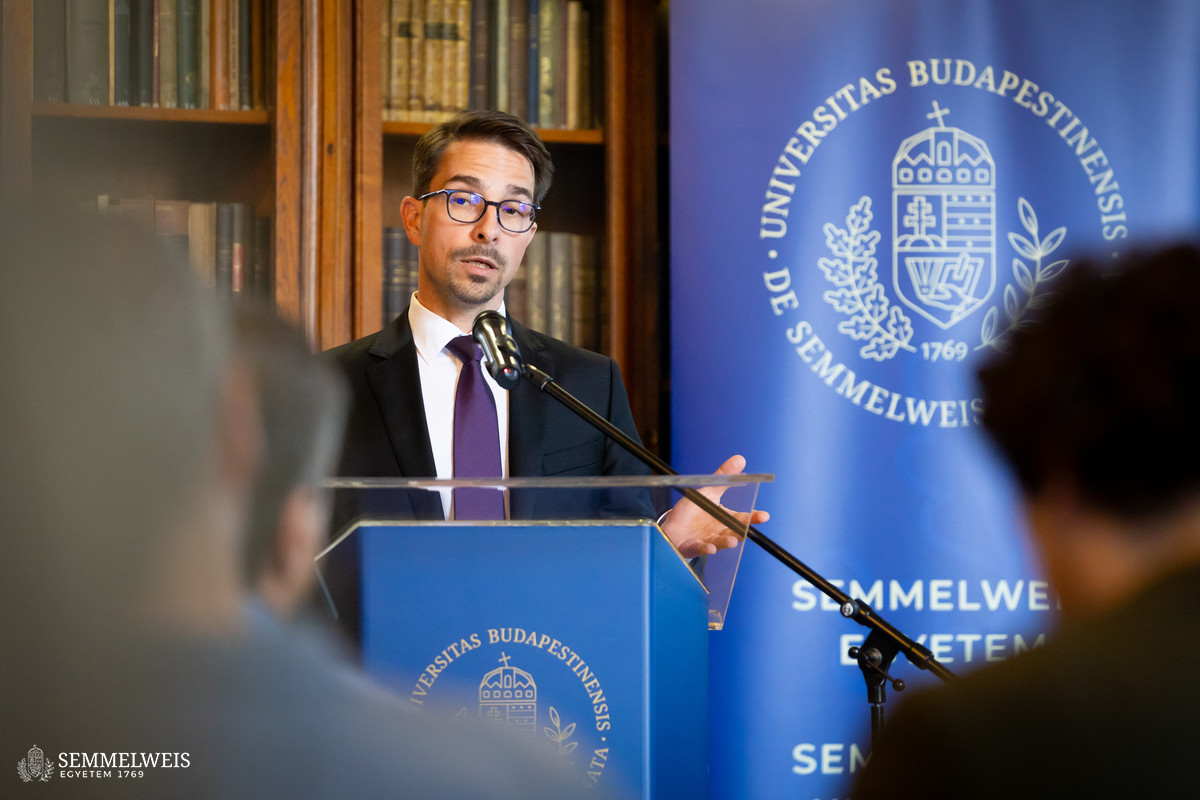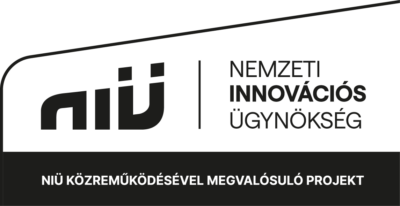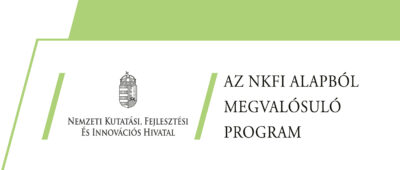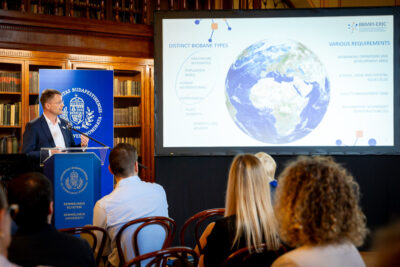The key to a successful business is the combination of innovation results and professional networking, emphasized Vice-Rector for Science and Innovations Dr. Péter Ferdinandy in his opening address, adding that the Science and Business Salon event series offers the actors of the university’s innovation ecosystem a forum for professional exchange. The Hungarian Startup University Program, which provides the framework for the event, teaches innovation-related skills to university students, who have the opportunity to develop a business model for a new startup company around an innovative idea. Presentations on the regulatory requirements and intellectual property aspects of medical devices, with a focus on software and databases, might also contribute to these projects. As Dr. Péter Ferdinandy pointed out:
Software itself can be considered a medical device. Indeed, given current trends in innovation, it is possible that within a decade, each drug may contain software providing patient-specific data on their applicability.
According to Dr. Renáta Papp, Director of the Center of Science & Innovation Vice-Rector and Business Development (TÜK), Semmelweis University is participating in the HSUP with two teams, mentored by two TÜK staff members, Business Development Manager Kinga Deák and Market Research & Development Manager Zsolt Varga.
One of the key speakers at the event was Dr. David N. Bernstein, Senior Researcher at Harvard Business School and Visiting Professor at Semmelweis University. In his online presentation, he discussed the trends, opportunities, and limitations of digitalization in healthcare. He stressed the importance of a clear definition of digital health and digital healthcare. “When I ask people what is digital health, I get a huge range of answers,” he said. He explained that digital health encompassed a number of technologies, from mobile health to telemedicine, artificial intelligence, and wearable medical devices. Of course, there is considerable overlap between these categories, which is why it is particularly important to identify specific development opportunities and digital solutions to real health problems that matter to people.
Dr. David Bernstein spoke about the driving forces behind the digitalization of healthcare, including changing customer expectations and the need for data-driven decision making. There’s this demand for people, as our time is limited, to seek the care they want in the places that they want, he noted. This trend is leading to increased interest in remote patient monitoring and telemedicine solutions, allowing patients to benefit from more convenient and more easily accessible healthcare.
The researcher highlighted the growing market for digital health, which he predicted would expand significantly in the years to come. In 2023, the digital health market was worth USD 180.2 billion, but is expected to grow to USD 550 billion by 2028, he said, pointing out the huge potential for innovation and development in this field.
Dr. David Bernstein discussed the potential of wearables and implantable devices to enable remote patient monitoring, as well as advancements in diagnostics and medical imaging through artificial intelligence. “These instruments and diagnostics and medical imaging can also lead to more customized 3D-printed implants that allow for more personalized medicine,” he stated.
However, Dr. David Bernstein cautioned against treating digitalization as a one-size-fits-all solution, stressing the need for a strategic approach in order to solve real-world healthcare problems. Digital health is not a strategy, it’s a tool, he noted, emphasizing the importance of thoughtful integration to avoid replicating flawed systems in a digital format. Speaking about the limitations of digitalization, he also touched on potential data protection issues and concluded by pointing out that any innovative solution in the field of digital health would only be truly useful if we take into account the financial and infrastructural capacity of the region and hospital concerned.
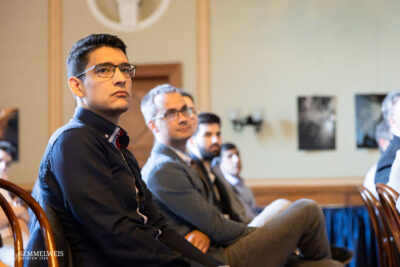 Given that the databases generated from biobanks, multi-omics studies, and clinical care data provide a background for developing new technologies at Semmelweis University, protecting intellectual property related to databases is also given priority, emphasized Dr. Renáta Papp as she introduced the upcoming presentation on the forms of intellectual property protection related to the development of digital technologies.
Given that the databases generated from biobanks, multi-omics studies, and clinical care data provide a background for developing new technologies at Semmelweis University, protecting intellectual property related to databases is also given priority, emphasized Dr. Renáta Papp as she introduced the upcoming presentation on the forms of intellectual property protection related to the development of digital technologies.
Dr. Bálint Halász, Partner and Co-head of Country of the Budapest office at the Bird & Bird international law firm, presented the legal tools relevant to digital health projects. As he explained, not only did the regulation of intellectual property protection vary from country to country, but there were also many intermediate stages before an invention could obtain a patent. As a result, many projects might not receive the legal protection that is most appropriate for them. He provided an overview of the complex regulatory environment by describing the know-how, patents, copyrights, and databases, illustrated through three case studies.
Finally, Dr. Mátyás Pétervári, PhD student at the Institute of Pharmacology and Pharmacotherapy and Managing Director of Sanovigado Ltd., gave a presentation on the software development workflow, its pitfalls, risk classifications, and standards, also describing how the market entry of medical technology software could be accelerated by leveraging the opportunities provided by regulations.
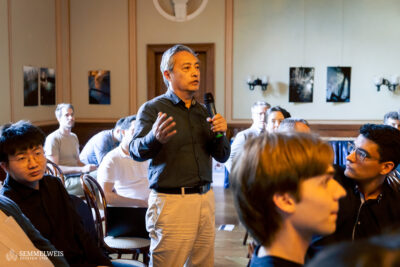 Innovations emerging from the recent technological revolution, characterized by machine learning, artificial intelligence, cloud computing, and big data, among others, are being harvested by a number of new market players seeking to enter the highly regulated medical technology field. In order to be successful, it is essential not only to be aware of the regulatory environment and to plan early for cost-effectiveness, but also to involve the right experts throughout the process, Dr. Mátyás Pétervári concluded.
Innovations emerging from the recent technological revolution, characterized by machine learning, artificial intelligence, cloud computing, and big data, among others, are being harvested by a number of new market players seeking to enter the highly regulated medical technology field. In order to be successful, it is essential not only to be aware of the regulatory environment and to plan early for cost-effectiveness, but also to involve the right experts throughout the process, Dr. Mátyás Pétervári concluded.
Following questions from the audience, Dr. Péter Ferdinandy announced that the Semmelweis Innovation Club would be launched at the upcoming Science and Business Salon event on June 20, under the patronage of Rector Dr. Béla Merkely. The club aims to provide expert assistance to Semmelweis University inventors in the questions arising during the establishment of spin-off companies and product development.
Dr. Balázs Csizmadia, Judit Szabados-Dőtsch
Photos by Boglárka Zellei – Semmelweis University
The project STARTUP-2024-HSUP-26 was implemented by the Hungarian Innovation Agency with the support of the Ministry of Culture and Innovation, with funding from the National Research, Development and Innovation Fund.
